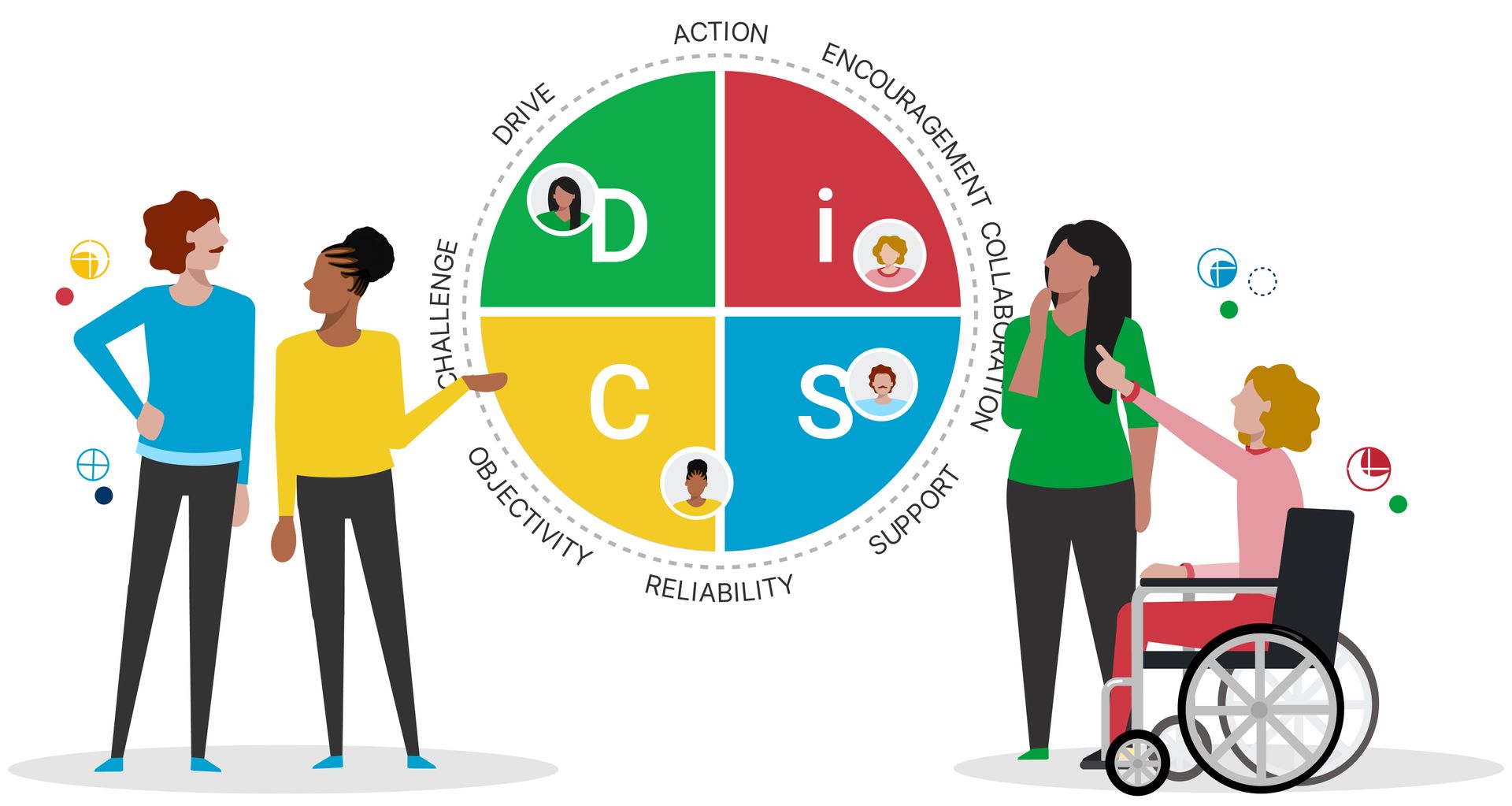By: Melissa Barlock
Body language makes up for 55% of the meaning of a message

Last week we talked about using the acronym FORM as a quick guide to remember what to say to patients with your words. As a refresher, the letters stand for the topics of Family, Occupation, Recreation, and Motivation.
This week we‘ll discuss what you should say with your body—body language.
A subset of nonverbal communication, body language refers to how we communicate with our physical behaviours. Many people believe that nonverbal communication accounts for a significant majority of the meaning of a message; specifically, words, tone of voice, and body language account for seven, thirty-eight, and fifty-five percent, respectively. Known as the 7-38-55 rule, it was put forth in two published studies by Albert Mehrabian in 1967. Though likely taken out of context, there is no doubt that nonverbal communication can reveal a lot about how we truly feel. For instance, imagine you‘re a patient and a dentist greets you with a curt hello and rushes your procedure, all with an enduring expression of discontent on his or her face, and in her tone of voice and body language. You ask how her day is going and she replies, “It’s going well.” What would you believe, her words or her nonverbal cues? Our internal states are evident in our nonverbal cues, and can be much easier to conceal with our words than with our bodies. You want the words you say and your body language to be congruent, or you may not send the message that you intend to. Luckily, there’s a quick and easy-to-remember acronym for body language, too, and it spells
SOFTEN!:
Smile: not all body language is interpreted the same way across and within cultures, but happiness is considered one of the universal facial expressions of emotion. The others are sadness, fear, anger, disgust, and contempt. They’re universal in the sense that they’re consistent and easily recognized across all cultures, and likely evolved to serve an adaptive role; in other words facial expressions are important—don’t underestimate the power of a good smile! At the very least, always maintain a pleasant countenance, and try to be aware of any conscious or unconscious micro-expressions you may be exhibiting.
Open: open refers to your body posture, and is contrasted with a closed posture. Again, it likely evolved to serve an adaptive function and involves consciously and unconsciously exposing or concealing vulnerable body parts in order to signal your receptivity to the other person. An open posture conveys friendliness, trust, and confidence. It includes uncrossing your arms with your palms up and fingers spread, and raising your head and chest to directly face the other person. On the other hand, a closed posture can signal disinterest, mistrust, or hostility. It is essentially the opposite of an open posture and includes crossing your arms with your body turned away from the other person.
Forward lean: like having an open posture, a slight forward lean towards the other person can indicate a degree of comfort and trust. It can also indicate that you are intent and interested in what the other person is saying. Don’t encroach beyond interpersonal space, however, and know that leaning away from the other person can give a negative impression.
Touch: also known as haptic communication, touching is a quick way to establish warmth and trust. Many studies in humans and other animals have shown the damaging effects of touch deprivation. Studies have also been done that show the benefits of an appropriate use of touching. However, it is rarely taught with other communication techniques, though it can be a powerful way to build rapport. For example, in one study, doctors who appropriately used touch were rated as more caring and likeable, and their patients had less cortisol (a stress hormone) and better medical outcomes. Touch in the workplace should be used sparingly and limited to clothed (if exposed, it may be perceived as too personal) areas of the arms, shoulders, and upper back. Introductory handshakes should be firm but comfortable. Other touches should be light and short, and used at the appropriate times, to maintain professionalism.
Eye contact: Oculists concerns the study of the eyes in nonverbal communication. Like a moderately firm handshake, there’s an appropriate and inappropriate way to make eye contact, though it does differ between cultures. When you first meet someone, it’s polite to establish eye contact right away and maintain it for a few seconds while introducing yourself; some experts recommend looking just long enough to ascertain the colour of the other person’s eyes. This shows that you’ve acknowledged the other person, and it also shows confidence and a willingness to engage. If you’re uncomfortable at first, look at the bridge of the other person’s nose to feign eye contact. While there are no set rules, maintain eye contact for approximately fifty percent of the time when speaking, and approximately seventy-five percent of the time when listening to show the other person you’re interested. Or, instead of worrying about it too much, just remember to make direct eye contact from time to time during a conversation. If you’re just making small talk or you’re on the dental chair it’s okay to make less eye contact. As always, read the situation to make good judgements. Making eye contact for too long can make the other person extremely uncomfortable; when you have to look away to avoid staring, do it slowly and look slightly off to the side. Doing it too quickly is awkward, and looking downwards can make you look shy and unconfident.
Nod: nodding of the head generally means ‘yes,’ and during conversation it can signal acknowledgement, acceptance, approval, or agreement. A single nod when introducing yourself will suffice, and occasional nods as the listener during conversation can show that you’re attentive and understand the other person, whether or not you agree with them.
Other body language displays to watch out for include gestures, breathing patterns, tone of voice, and proxemics (distance between communicators), to name a few. Make a conscious effort at first to acknowledge your body language, and in no time you’ll become a natural.
Enspire Dental Opportunities is looking forward to working with you.












